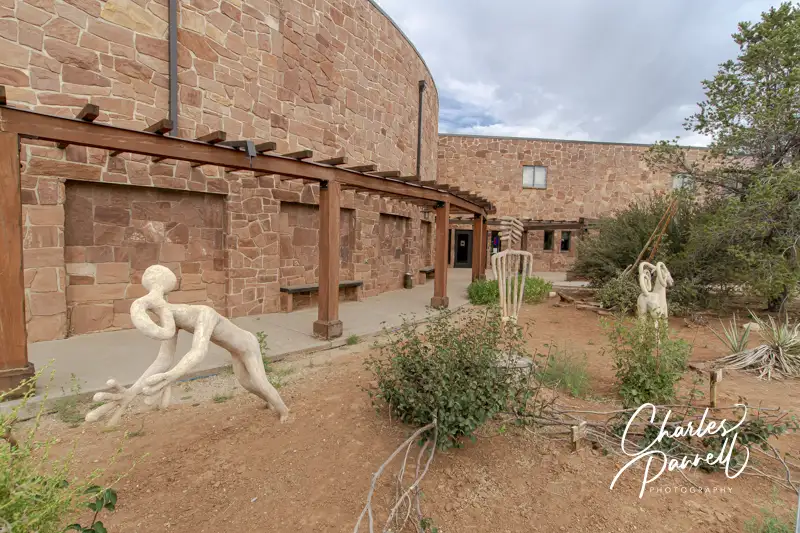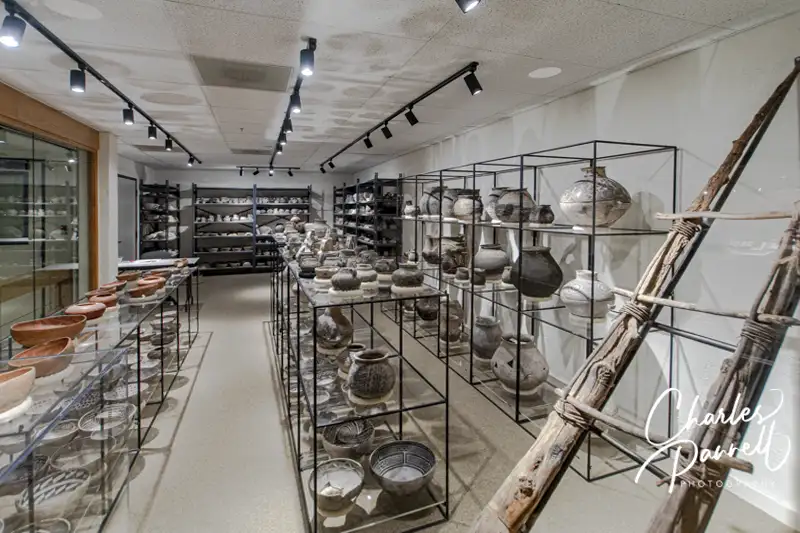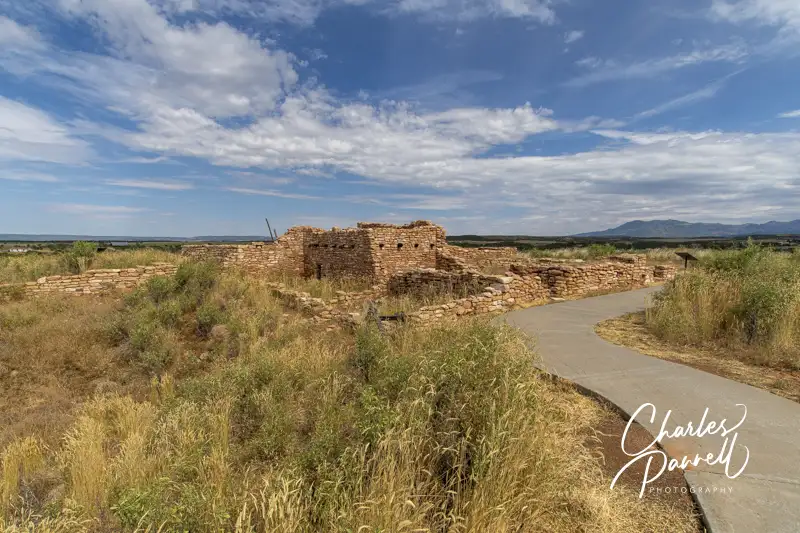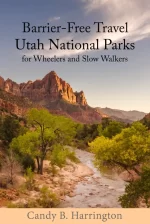Edge of the Cedars State Park — A Must See in Southeastern Utah

Named for its unique location, Edge of the Cedars State Park (stateparks.utah.gov/parks/edge-of-the-cedars is a hidden gem in a state filled with natural beauty. In fact it’s easy to miss if you are zipping down Highway 191 from Canyonlands and heading over to Monument Valley. This Blanding attraction is a must-see, as not only does it boast an impressive collection of Ancestral Puebloan pottery; but it also includes a partially excavated Puebloan village. And the diversity of the artifacts is only surpassed by the accessibility of the site for wheelchair-users and slow walkers.
Edge of the Cedars — The Museum

There’s accessible parking near the front entrance of the museum, with a level sidewalk that winds past a sculpture garden to the front door. Take some time to linger on in the garden and enjoy the pieces that were inspired by rock art. Inside there’s level access to the front desk, gift shop, accessible restrooms and gallery space, and elevator access up the second floor. For a good primer on the site, be sure and watch the 15-minute movie in the adjacent adjacent auditorium, which features barrier-free access and plenty of room for wheelchairs and scooters.
The downstairs gallery includes rotating exhibits, but the upstairs gallery houses the real gems. The Puebloan Pathways exhibit features interpretive panels that outline the different styles of housing, masonry and crops, and includes a time lime of the rise and fall of the civilization. And there’s a good sampling of pottery, baskets, dart tips and other items that were excavated in Southeastern Utah. The Visible Storage exhibit, which is behind glass, showcases some of the prized artifacts including a large collection of Ancestral Puebloan pottery and an impressive macaw feather sash that dates back to 1150 AD.
There’s also an entire room devoted to artifacts that were unearthed at the Edge of the Cedars Pueblo. Actually there were several villages that were superimposed on one another that occupied the site from 800 AD to 1225 AD. Part of the pueblo has been excavated, but the rest will remain intact out of respect for the descendants of the Ancestral Puebloans. And if you’d like to get a good overview of the site, there’s also ramp access up to a viewpoint with a large window.
Edge of the Cedars — The Pueblo

There’s level access to the ruins out back, with a sidewalk out to the great house and kiva. The sidewalk circles the excavated structures, and although you can’t go inside the great house, you can certainly get a good view from the sidewalk. Visitors are allowed to access the kiva, but that requires stepping up on the structure and climbing down a ladder. Still the ruins are impressive, and there are a number of interpretive panels explaining the significance of the structures. All in all, it’s about a quarter-mile level walk around the pueblo, but if that distance is a problem, you can do a shorter out-and-back hike.
Don’t miss the Sun Marker sculpture by Joe Pathak, which is located down a 300-foot dirt path near the kiva. This is a modern interpretation of prehistoric archeoastronomy sites that were found in the southwest, and it’s designed to interact with the sun. Throughout the year sunlight shines through the cutouts on the sculpture and casts shadows and images on other parts of the sculpture. No two days are ever the same, so you can see it many times and it will seem like an entirely different piece.
Edge of the Cedars State Park also makes a good lunch stop. There’s sidewalk access over to a covered picnic area with accessible picnic tables near the front parking lot. It’s a great way to top off a visit to this one-of-a kind Southeastern Utah archaeological find.

